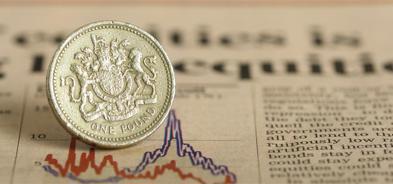High savings rates leave savers vulnerable to tax charges
Understand why higher savings rates and the frozen personal savings allowance could make you liable for tax on the interest you earn – on a much smaller savings pot than two years ago.
The value of investments can fall as well as rise and that you may not get back the amount you originally invested.
Nothing in these briefings is intended to constitute advice or a recommendation and you should not take any investment decision based on their content.
Any opinions expressed may change or have already changed.
Written by Alice Haine
Published on 13 Nov 20238 minute read

Savers are enjoying significantly better savings rates thanks to rapidly rising interest rates, though their money is still losing value in real terms once inflation is factored in.
With headline inflation now in retreat, the bigger threat to carefully built-up savings is the tax charges applied on the interest they earn.
That’s because high savings rates put more people at risk of breaching their annual personal savings allowance.
What is the personal savings allowance?
First introduced in 2016, when savings rates were much lower than today, the personal savings allowance remains frozen at:
|
|
Annual personal savings allowance |
|
· Basic rate |
£1,000 |
|
· Higher rate |
£500 |
|
· Additional rate |
£0 |
Nobody wants to pay tax on their rainy-day fund, so savers with significant cash sums stashed in a high-interest savings account must consider the tax-efficiency of their savings pot very carefully.
Will you pay tax on your savings this year?
The point at which your saving pot is liable for tax often depends on:
- The interest rate applied to the account
- When the tax is applied (monthly or annually)
- Your level of income
Savers with more attractive savings rates might be liable for a tax payment at a much lower level of savings than anticipated. Many savers don’t realise they could be liable for tax at all.
Hunting out the best savings rates to secure bumper returns might sound like a good idea, but many are unaware their savings are liable for tax on any interest over the personal allowance at their marginal rate of tax – unless it is sheltered in a tax-free ISA.
With interest rates either at or near their expected peak, the best savings rates may not stick around for long, so those keen to lock in the best should act fast.
Real-life example: the effective interest rate on new fixed savings accounts
Bestinvest has crunched the numbers using the effective interest rate – the actual interest rate paid, according to the Bank of England (BoE) – on new fixed savings accounts. This came in at 5.21% in September 2023, which means that savers who are higher rate taxpayers with just under £9,600 in cash savings at this rate would use up their £500 personal savings allowance and be charged tax on the interest they earn (see the table below).
This is significantly less than the roughly £161,300 they could have saved two years earlier before the BoE began hiking interest rates when the effective interest rate on new fixed savings accounts was just 0.31%.
For a basic-rate taxpayer today, there is more wiggle room. They can save just under £19,200 in an account with an interest rate of 5.21% before they breach their £1,000 allowance and tax charges get applied to their interest payments.
Again, that is significantly less than the almost £322,600 they could have stashed away in September 2021. A summary of these figures is detailed below:
How much to keep in savings before interest is taxed
September 2023 vs September 2021
|
Date |
Effective interest rate |
Basic-rate taxpayer |
Higher-rate taxpayer |
Additional-rate taxpayer |
|
Sep 2023 |
5.21% |
£19,194 |
£9,597 |
£0 |
|
Sep 2021 |
0.31% |
£322,580 |
£161,290 |
£0 |
Sources
- Effective savings rates according to Bank of England’s Money & Credit data
- Bestinvest calculation uses Bank of England Savings calculator and assumes a lump sum deposit, with a constant balance over a 12-month period with no withdrawals or additional contributions
Personal savings allowance for other savings and investment income
Your personal savings allowance doesn’t just apply to bank and building society savings – it also includes:
- Interest applied to cash held in accounts with credit unions and NS&I (except for Premium Bond prizes)
- Coupon interest from corporate and government bonds (including gilts)
- Most purchased life annuity payments
- Interest distributions (though not dividend distributions) from money market or fixed income funds
You can’t ignore the personal savings allowance and hope HMRC won’t notice.
How tax on savings and investments works
If you go over your allowance and hope no one will notice how much you have stashed in savings, think again. HMRC calculates the tax due on savings interest from information supplied to them by banks and building societies, with the money deducted directly through the payroll.
This means workers taxed under PAYE will receive a tax code change, with HMRC estimating how much interest someone will receive in the current year by looking at what they received in the previous tax year.
Reporting savings interest to HMRC
- Self-assessment tax return
Anyone filling out a self-assessment tax return, where they declare their savings interest, will be aware a tax bill is coming. Good to know – you need to register for self-assessment if your income from savings and investments exceeds £10,000.
- Not employed, receiving pension or completing self-assessment
Your bank or building society will inform HMRC the level of interest you received at the end of the tax year. HMRC will then inform you that a tax charge is due and how to pay it.
You have a window of four years after the end of the relevant tax year to reclaim overpaid tax either through your self-assessment tax return or by filling in a form.
Low earners have an even higher Personal Savings Allowance
Savers can use their personal allowance of £12,570 to earn interest tax-free if it has not been used up by earnings, a pension or other income.
Good to know – those earning less than £12,570 also receive an extra £5,000 tax-free allowance for their savings income, known as the starting rate for savers.
This means someone can earn £12,570 in income and £6,000 in savings interest (£5,000 starting rate plus the personal savings allowance of £1,000) – that’s a total of £18,570 from wages and savings interest before tax is applied.
However, things get more complicated for those earning between £12,570 and £17,570. For every £1 of non-savings income above the personal allowance, they lose £1 of their starting savings allowance.
ISAs offer a tax-efficient alternative, protecting savers from tax charges on interest
Are you making the most of your tax-free ISA allowance?
Those concerned about paying tax on their savings should investigate tax efficient options, such as an Individual Savings Account (ISA), where savers can stash up to £20,000 each year without incurring tax on interest or capital gains.
Tax-free ISAs are more important than ever for investors because of the steep cuts the Chancellor has made to the annual dividend allowance (slashed from £1,000 to £500 next April) and capital gains exemptions (currently £6,000 set to halve to just £3,000 next year).
The recent Autumn Statement included measures to improve ISA flexibility, such as allowing ownership of fractional shares, the ability to make partial-transfers in-year and the option to open ISAs with multiple providers from April 2024.
The £20,000 annual allowance applies across all types of ISA. Proactive savers could consider storing a portion of their savings in the highest-interest cash ISA they can find and deposit the rest in a stocks and shares ISA to maximise potential longer-term investment returns. But remember, as with all investments, your capital is at risk with stocks and shares ISAs.
For every £100 in interest earned above the Personal Savings Allowance on a standard savings account, the taxpayer would only walk away with £80. Higher rate taxpayers would receive just £60 once tax is factored in.
Additional rate taxpayers would only get £55, which is why saving into a cash ISA can make sense.
Good to know – if you dedicate too much of the £20,000 ISA allowance to a cash ISA you could miss out on potentially higher longer-term investment returns from assets held in a stocks and shares ISA, although remember that the value of your investment can go down as well as up in this type of ISA.
Couples can share their Personal Savings Allowance to reduce the hit
Married couples and civil partners have an additional tax advantage. They can make ‘interspousal transfers’ – where savings can be switched to a partner who may be subject to lower rates of tax or a non-taxpayer – without incurring a tax charge.
If the higher-earning partner transfers a large chunk of their savings pot to the lower-earning partner, the couple could maximise two sets of personal savings allowance, dramatically reducing their overall tax exposure.
Good to know – if a couple has a joint account, interest will automatically be split equally between the account holders. If you want it split differently, you need to contact HMRC directly.
Bestinvest can help you save tax-efficiently
If you want to understand the impact higher savings rates could have on your savings, it’s easy to book a free coaching session with one of our financial planners.
Whether you’re saving for retirement, a big goal, a child or a rainy day, we have award-winning, tax-efficient accounts to match:
- Stocks & Shares ISA – quick to set up and easy to manage, our award-winning Stocks & Shares ISAs are the go-to account for those wanting to invest tax-efficiently
- Junior Stocks & Shares ISA – accounts for children, these operate in a similar way to their adult counterparts but the allowance is £9,000
- Self-invested Personal Pension – a type of personal pension, a SIPP gives you more freedom and control over your retirement investments
Important information
This article does not constitute advice or a recommendation relating to the acquisition or disposal of investments. No responsibility can be taken for any loss arising from action taken or refrained from on the basis of this publication.
The value of an investment may go down as well as up and you may get back less than you originally invested.
Pension transfer considerations: Before you consider transferring a pension, it is important to ask yourself: Will I lose any valuable benefits or features from my existing pension plan? If the pension is an employer-related plan, will the employer cease to pay in benefits if it is transferred elsewhere? Will I incur any penalties on my existing pension if I transfer? Is it an occupational final salary pension scheme (in which case it is very unlikely to be advisable to transfer)? Have I considered the charges on my current plan (a new arrangement may be more expensive – especially if you have a stakeholder pension)?
Taxation depends on individual circumstances and tax rules may change.
SIPPs are not suitable for everyone. If you don’t want to invest across different asset classes or don’t think you will make sure of the investment choices that SIPPs give you, then a SIPP might not be right for you.
Get insights and events via email
Receive the latest updates straight to your inbox.
You may also like…

Investing
Seven investing principles for DIY investors in volatile markets





